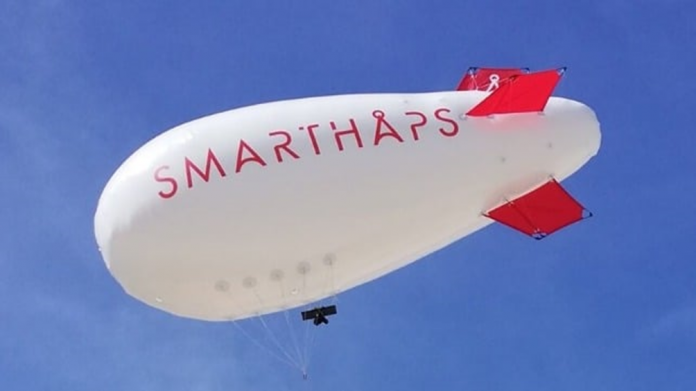
Valenciaport is testing a novel approach using airships for aerial surveillance of port facilities and waterways. Working with a start-up named SMARTHAPS they recently undertook the first flights as they explore the capabilities of the system to enhance monitoring around the port.
An electrically powered airship with sensors and instruments to analyze environmental, security, and maritime traffic control parameters flew over the Port of Sagunto to test the use of this technology. The airship was deployed at a height of approximately 325 feet and equipped with a gyro-stabilized optical camera for the acquisition of images. These images were sent in real-time to the ground control station. During the in-flight operation, various activities and areas of the port were monitored which had been selected by port management as areas of interest.
According to port officials, the trial, which used a captive airship, served to test this system for port applications such as pollution control, logistics operations, security, and traffic registration.
SMARTHAPS is specializing in the development of stratospheric vehicles known as HAPS (High Altitude Pseudo-Satellites), which are electric-powered airships capable of flying for several months at a height of 20 km. The company’s technology permits them to maintain a stationary position which in turn provides continuous coverage over an area of interest on the surface of the earth using the vehicle’s different instruments and sensors.
The test flights were part of the Autonomous Stratospheric Platforms for Maritime Monitoring (PLEAMMAR) project, being developed within the framework of the Ports 4.0 program promoted by Puertos del Estado and the Port Authorities of Valenciaport. The test provided a demonstration of the capabilities for the PLEAMMAR project which aims to carry out a feasibility study of the use of HAPS for port applications such as maritime and land traffic control, security and surveillance, pollution control, and logistics operations.
The Ports 4.0 capital fund was launched in 2020 as part of an effort to identify innovations and new technologies that can address the emerging challenges for ports.
It is believed to be the first test of this technology while other forms of drones and unmanned aerial services are also being deployed in ports and over shipping lanes. For the past few years, the European Maritime Safety Agency (EMSA) has been making drones available to ports and other authorities including coast guards in the EU. They have been employed to increase surveillance and in operations to examine the emissions coming from ships to ensure they are in compliance with regulations such as the EU’s low sulfur fuel rules. Ports including Antwerp and Rotterdam have tested the use of drones, but they have limited duration of flight and travel at relatively low altitudes.
SMARTHAPS promotes the capability of flying for several months over its targets and the ability to work from a fixed point for constant monitoring capabilities.
Source – THE MARITIME EXECUTIVE




